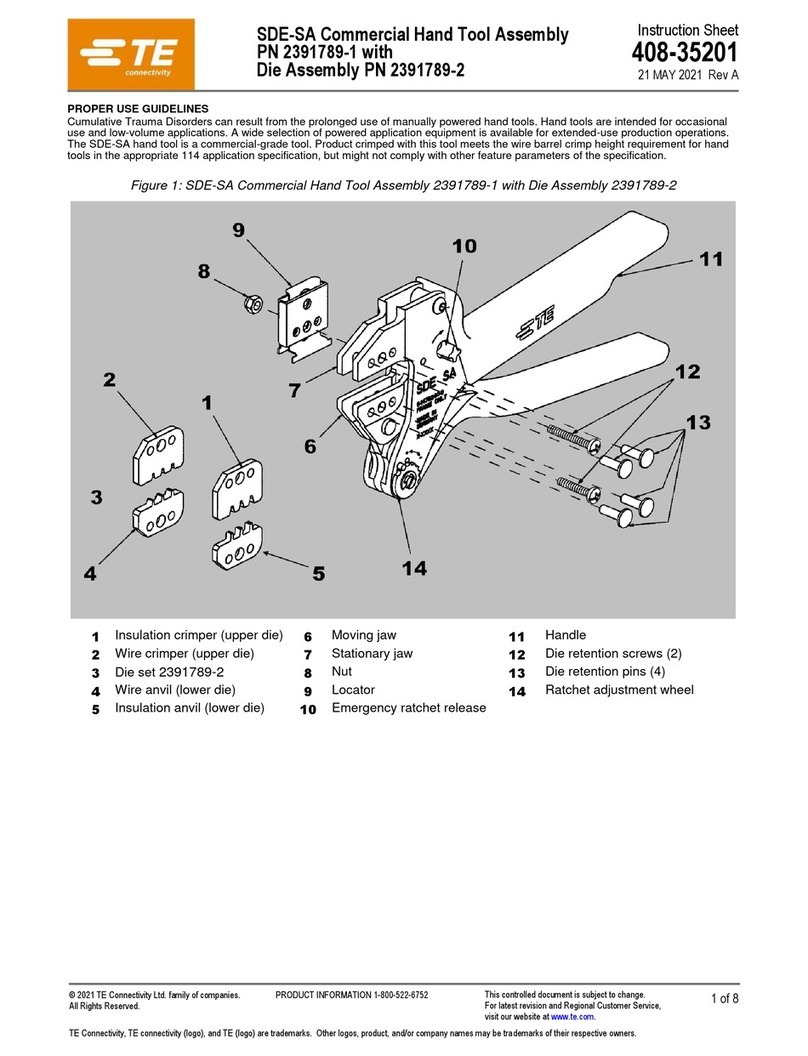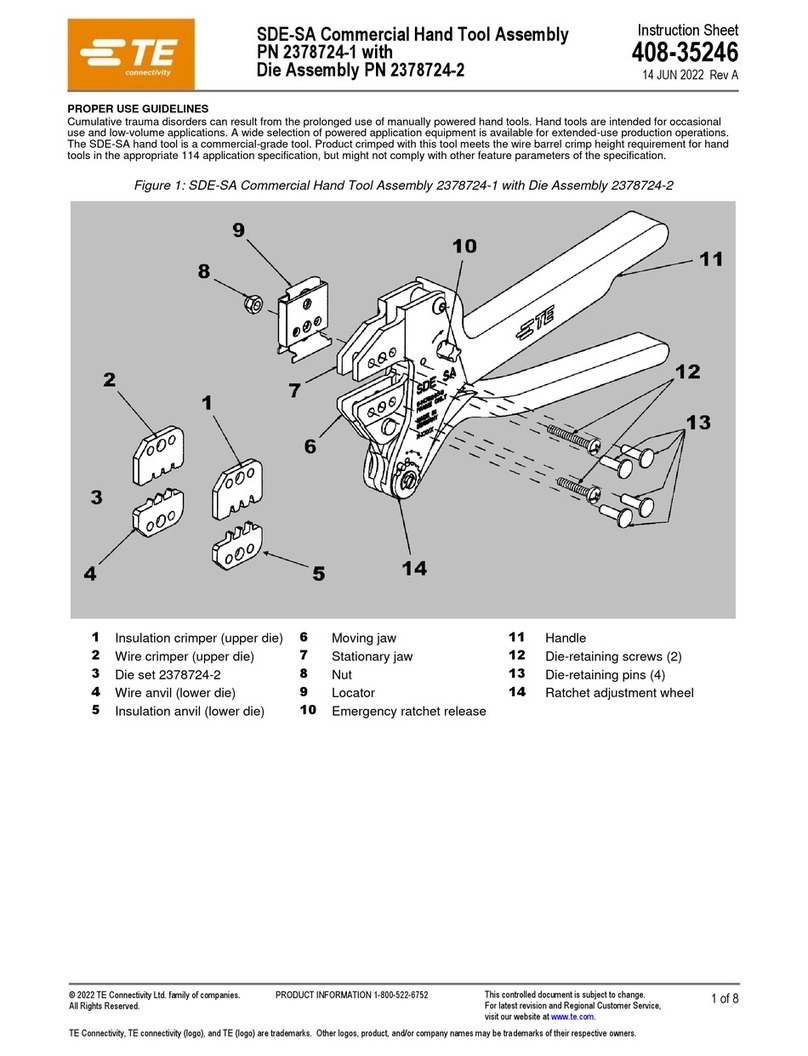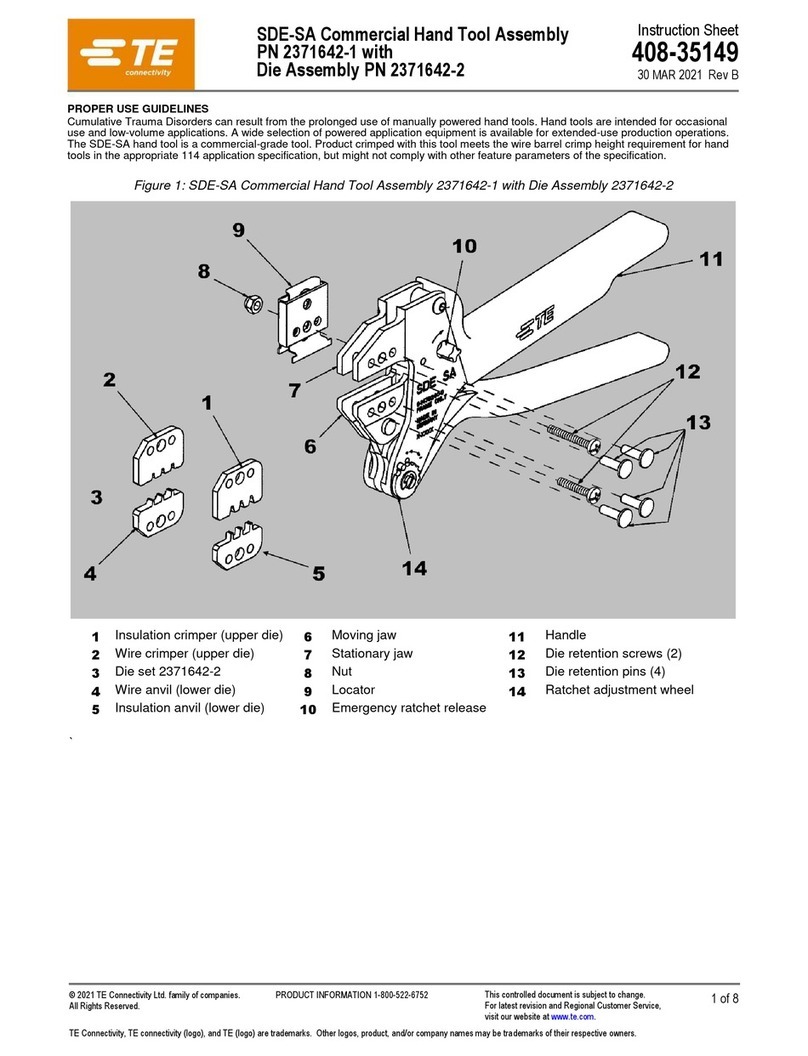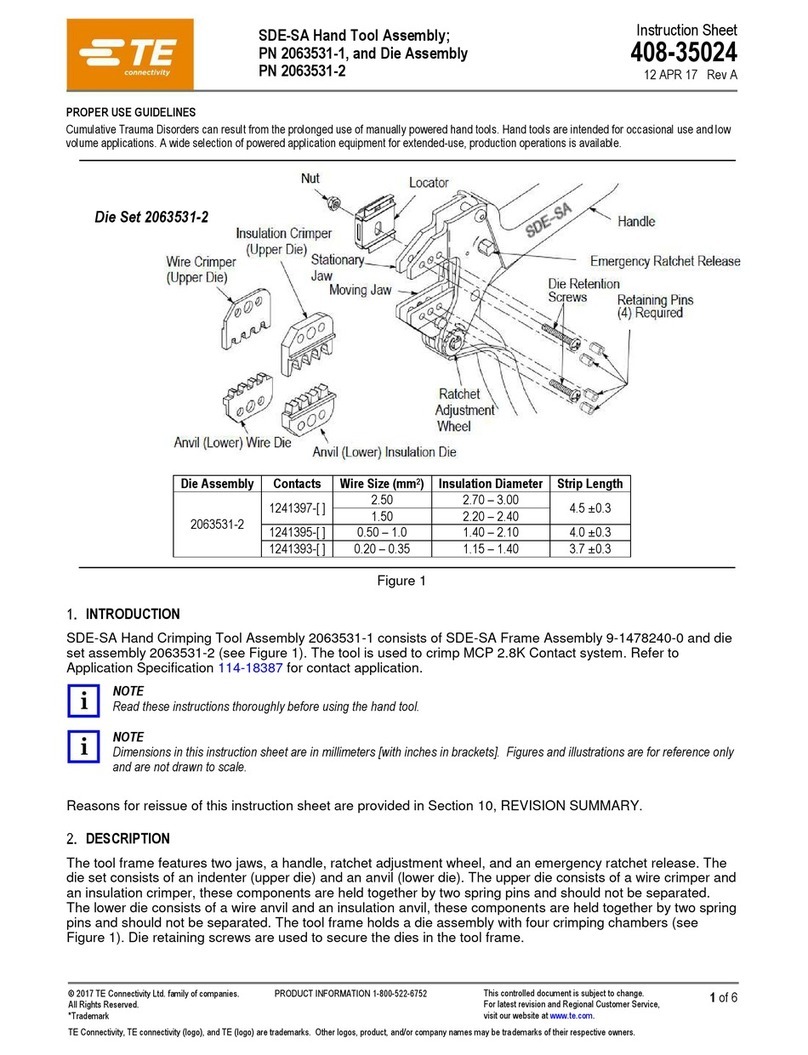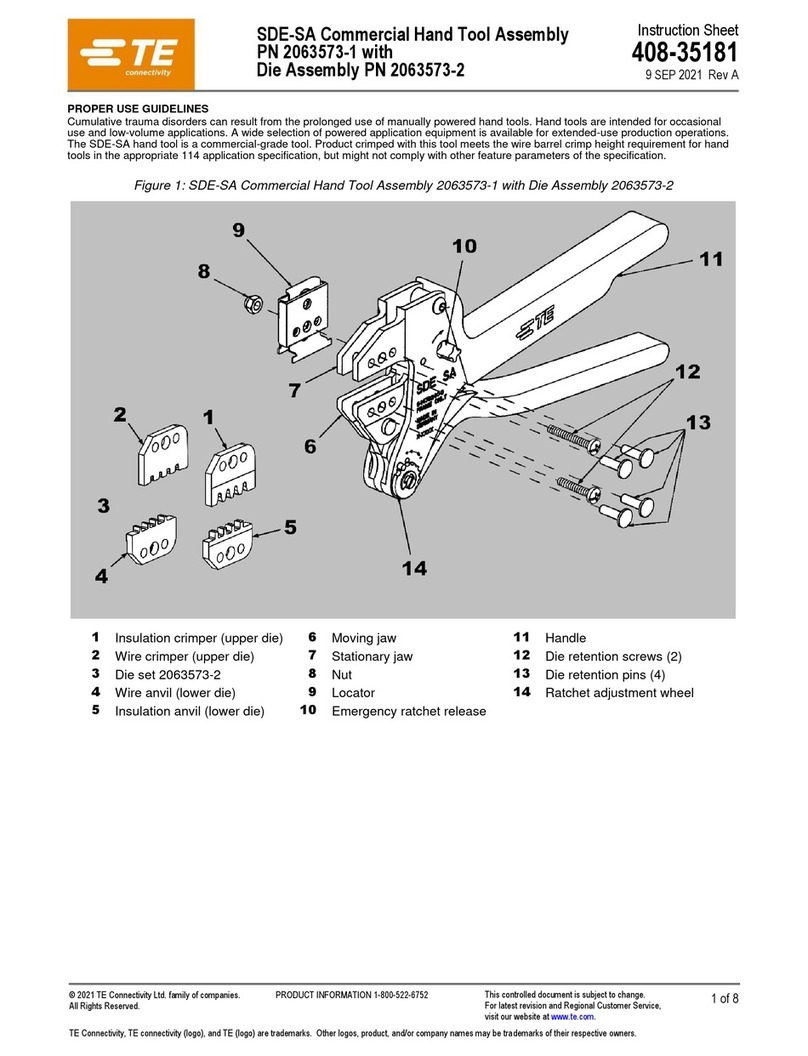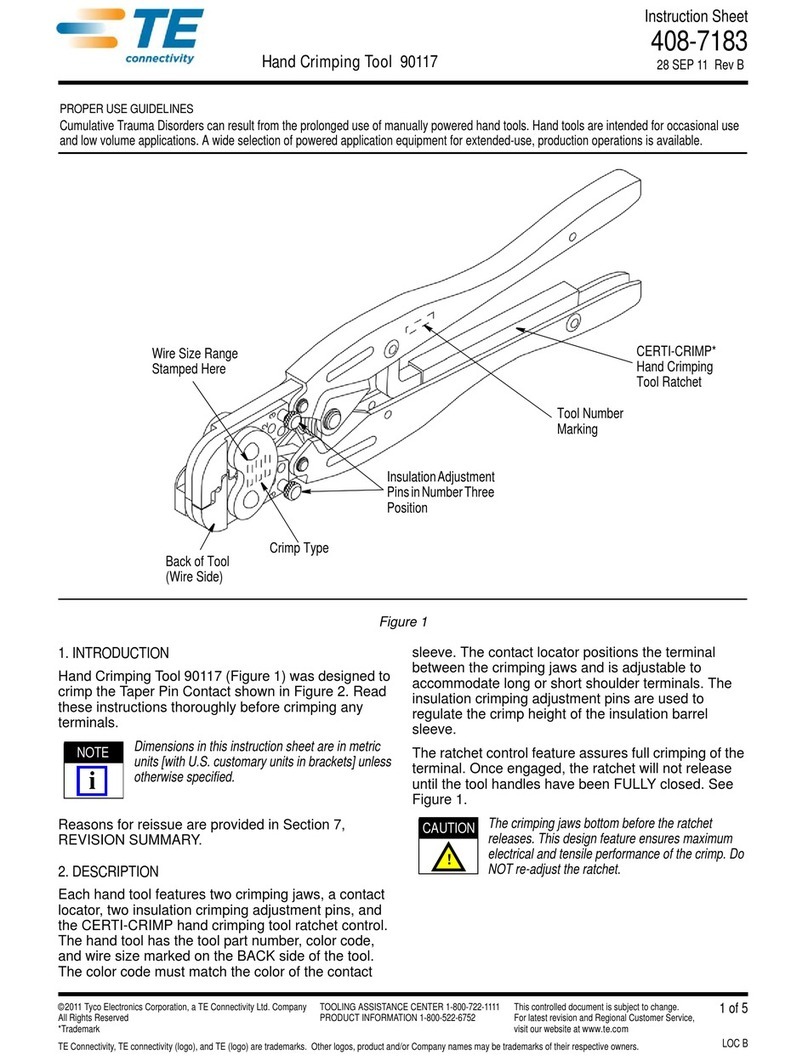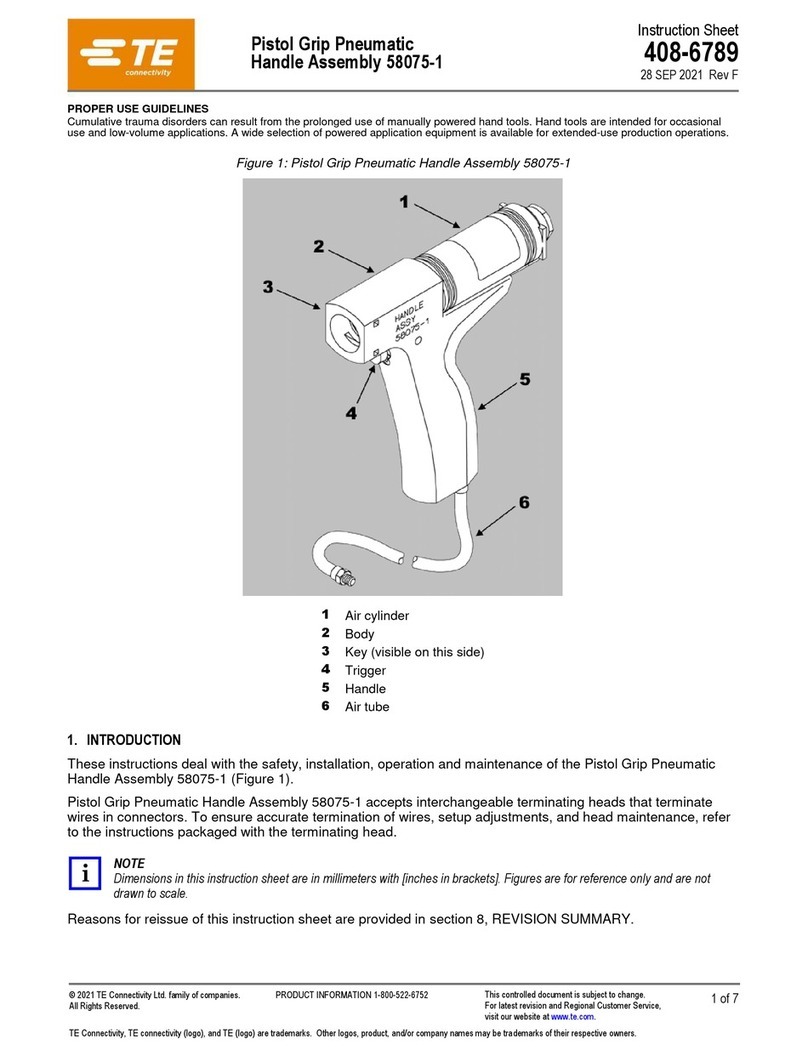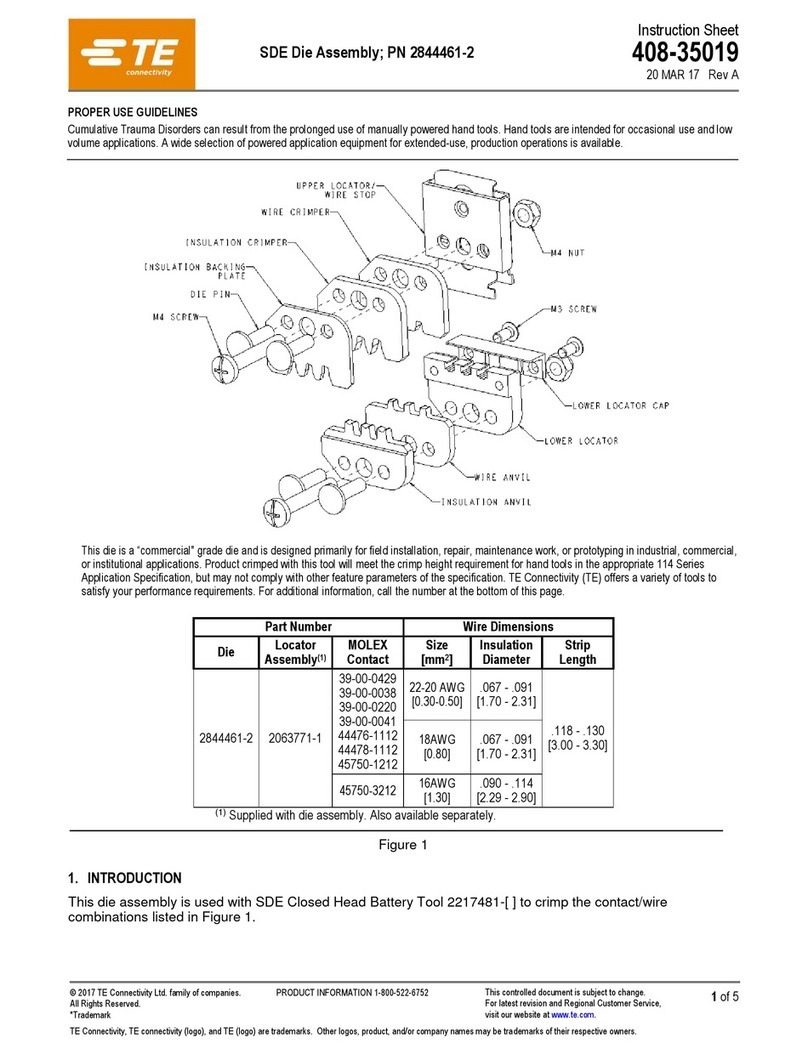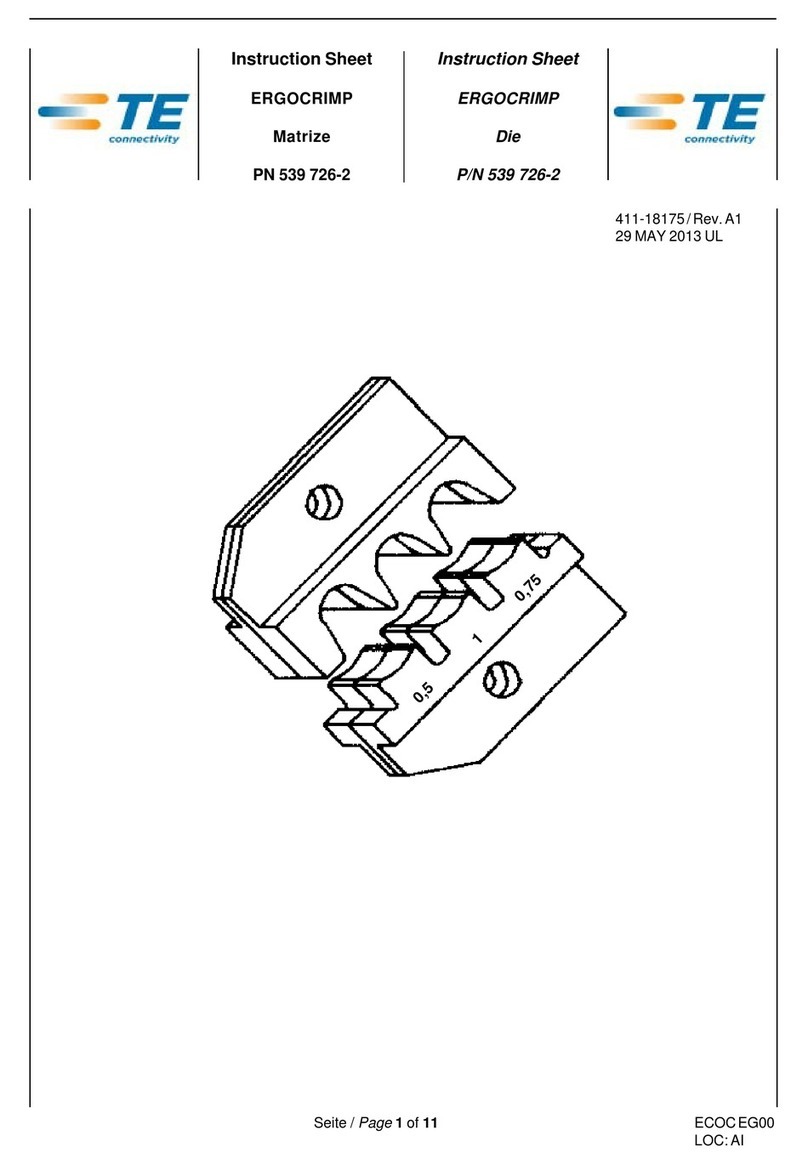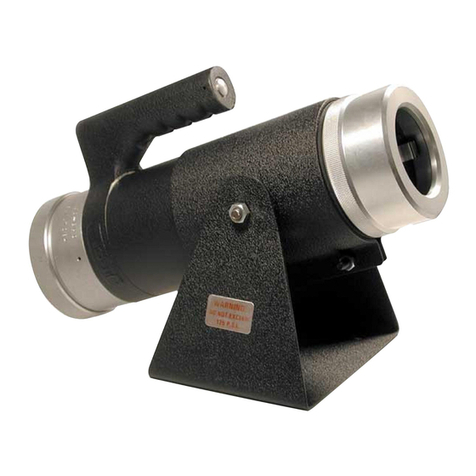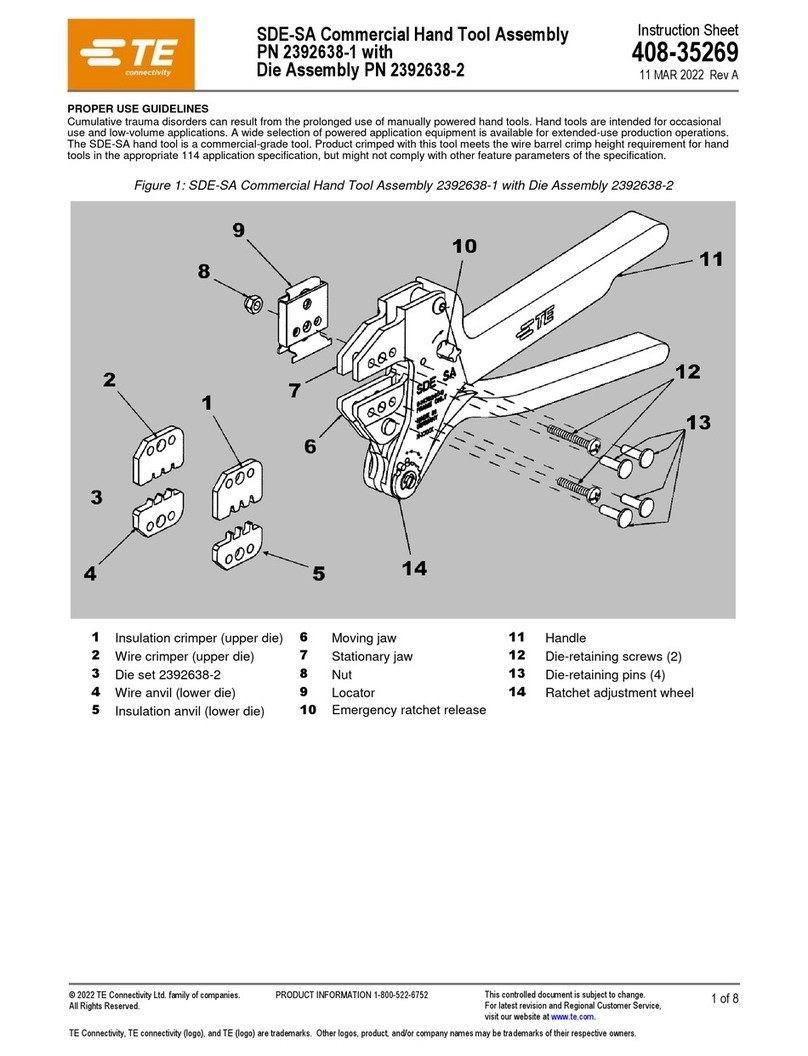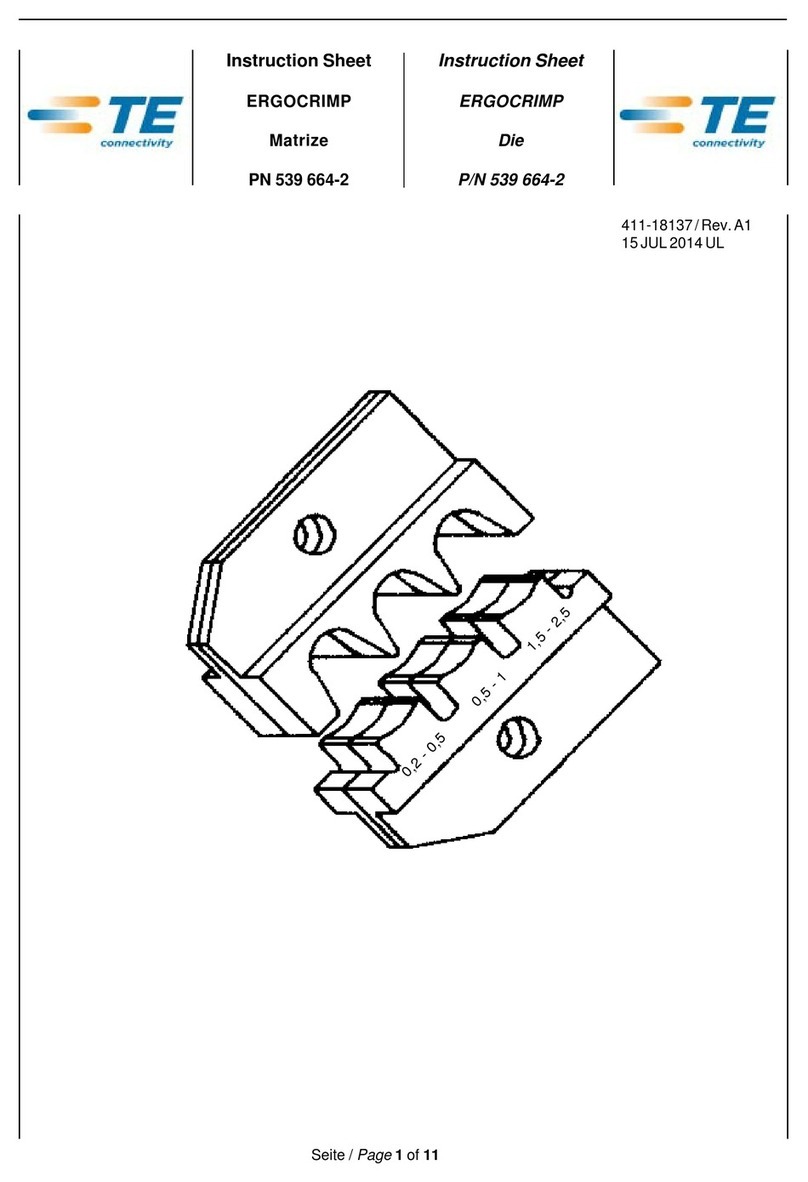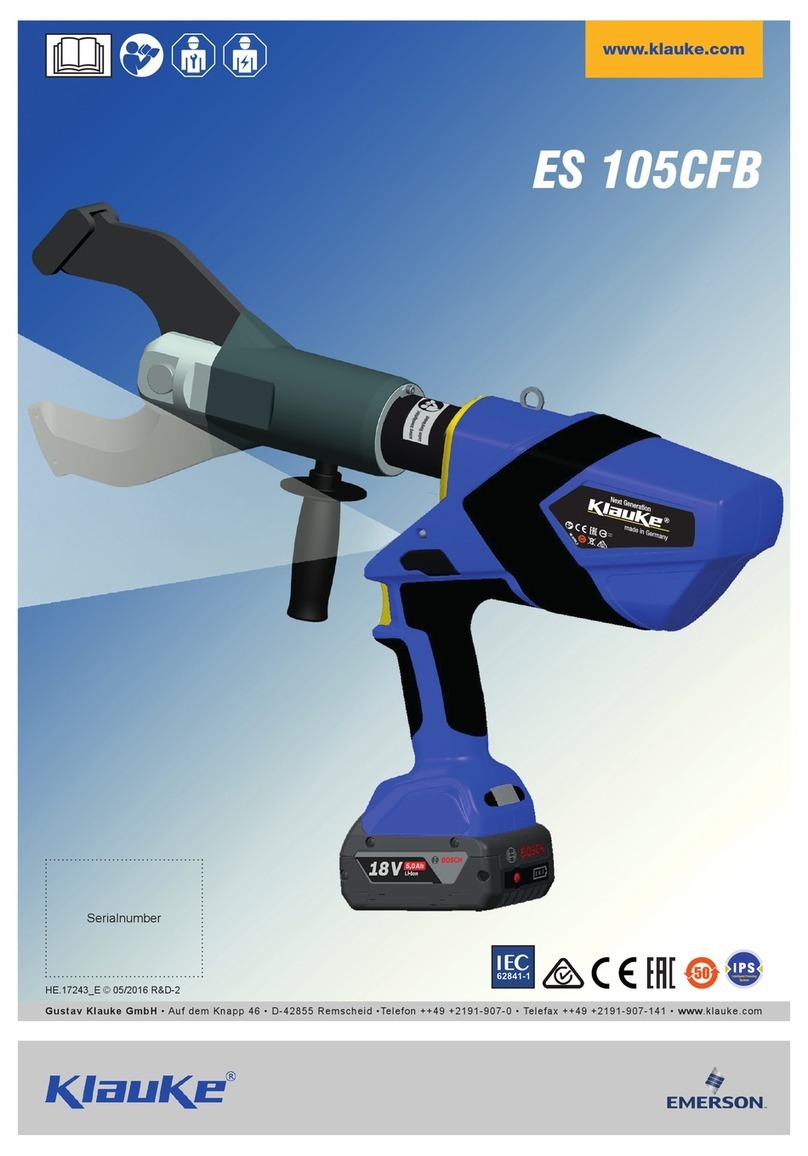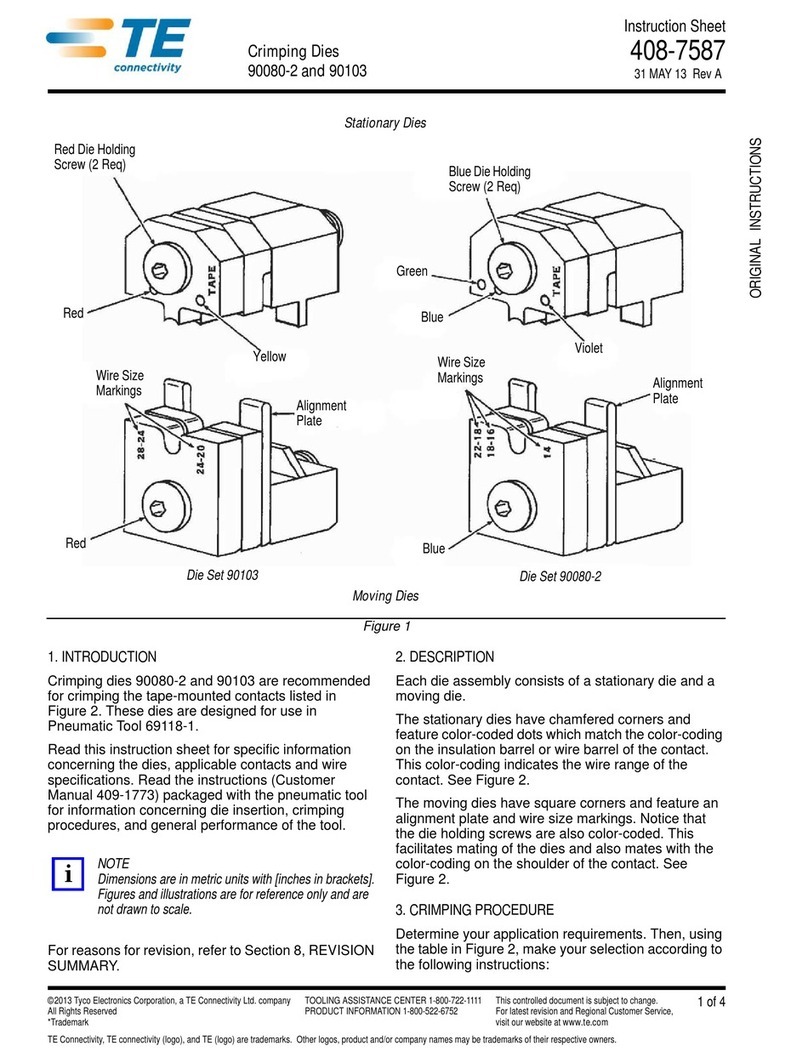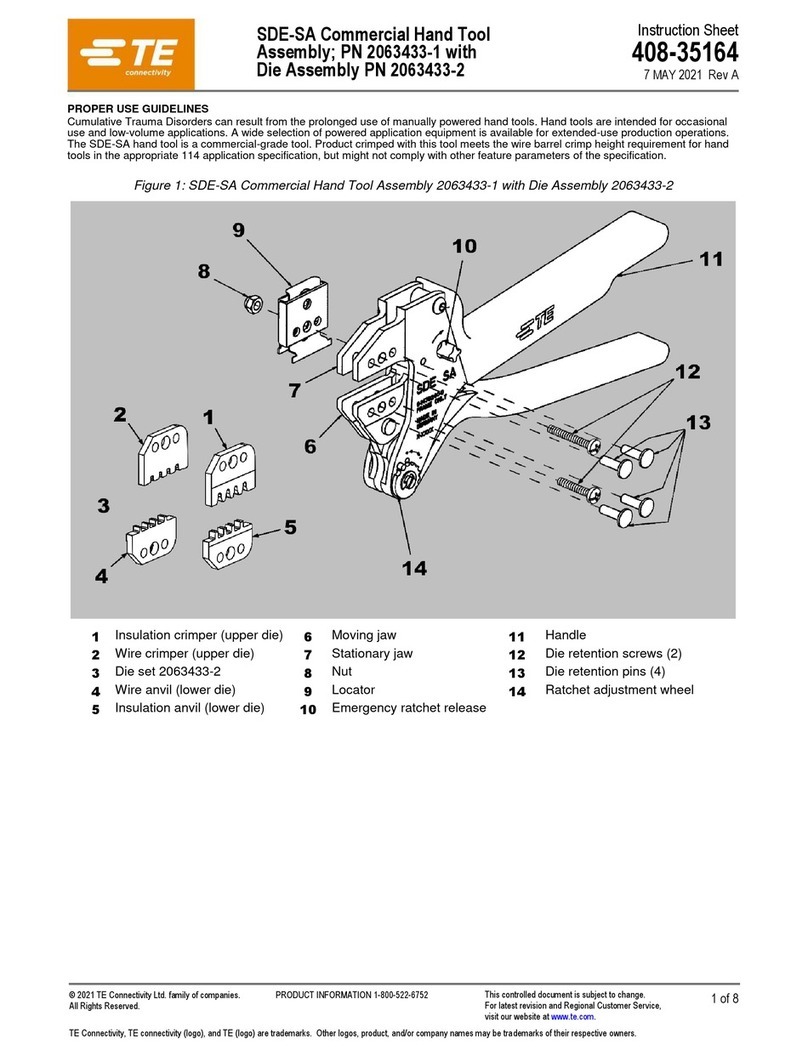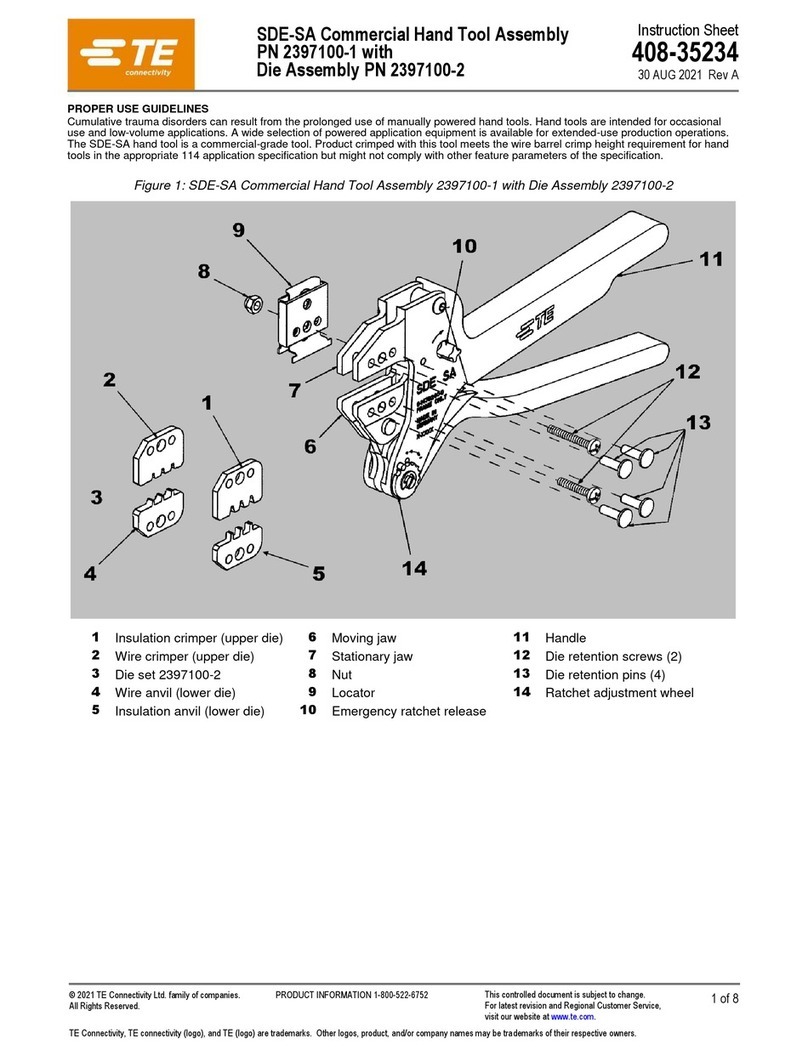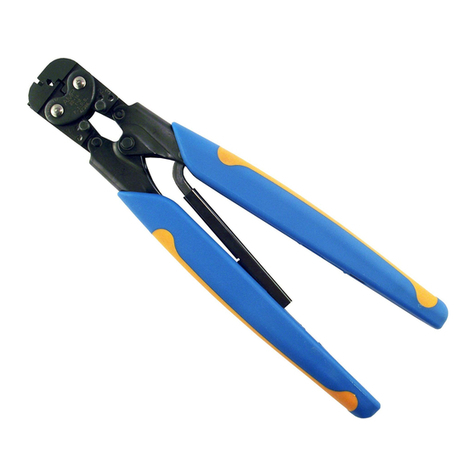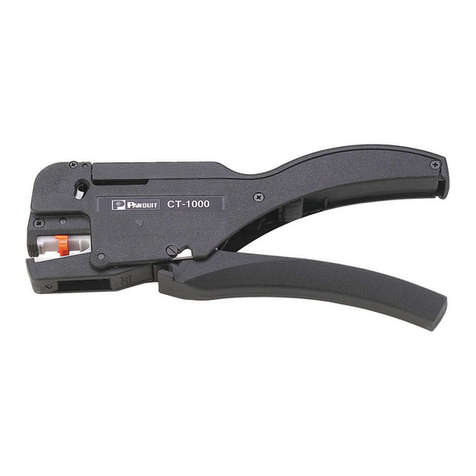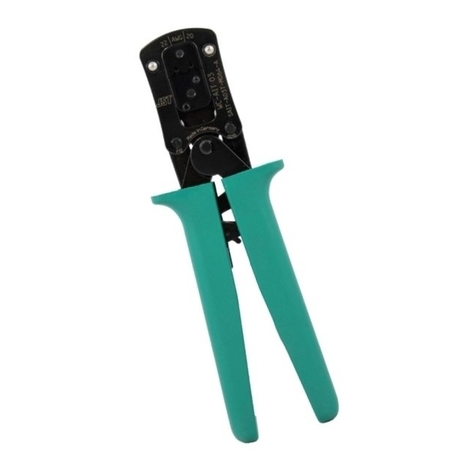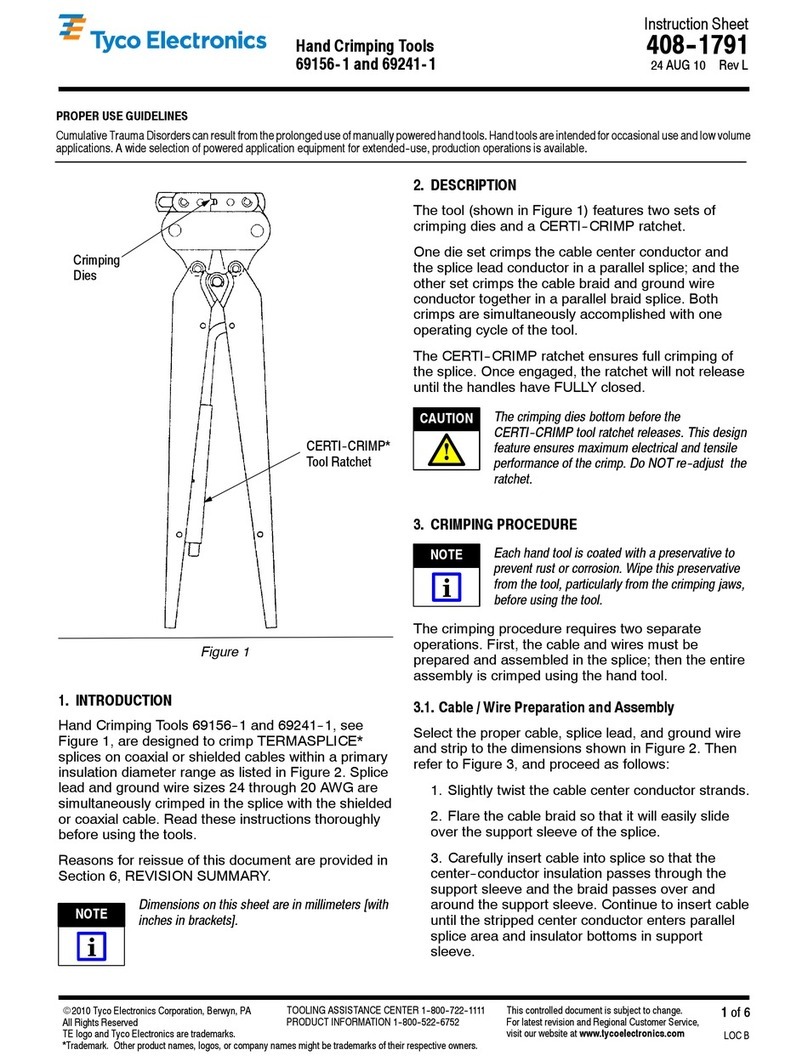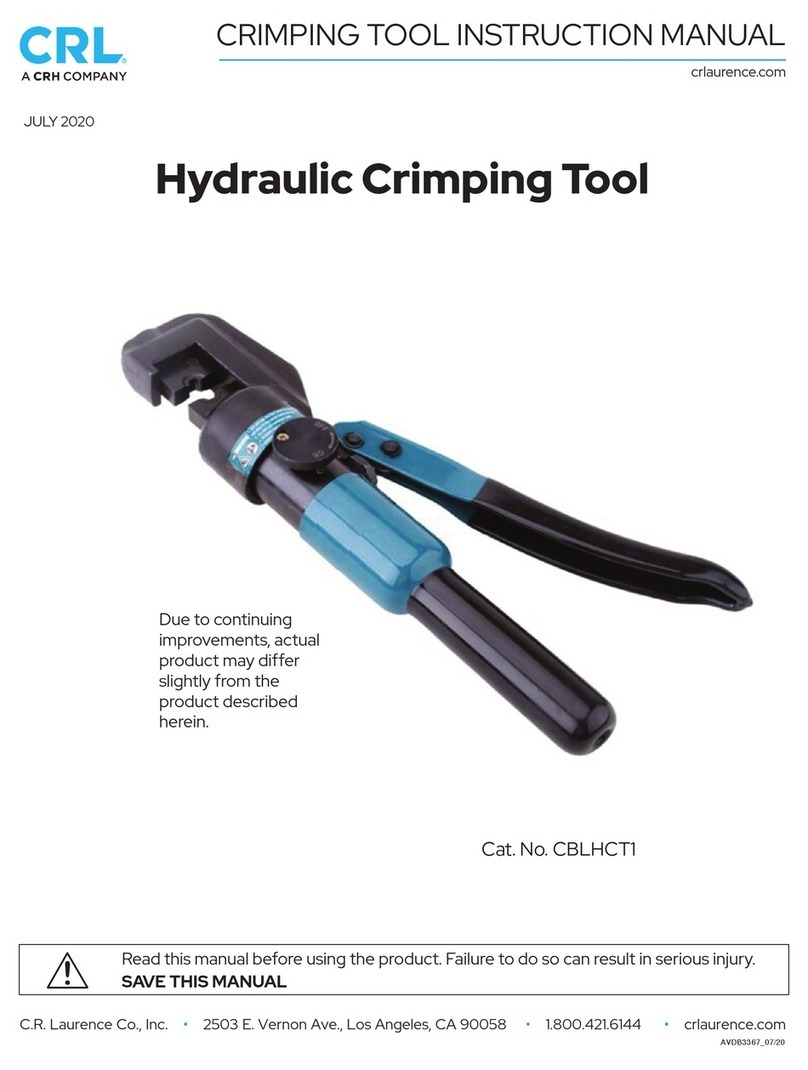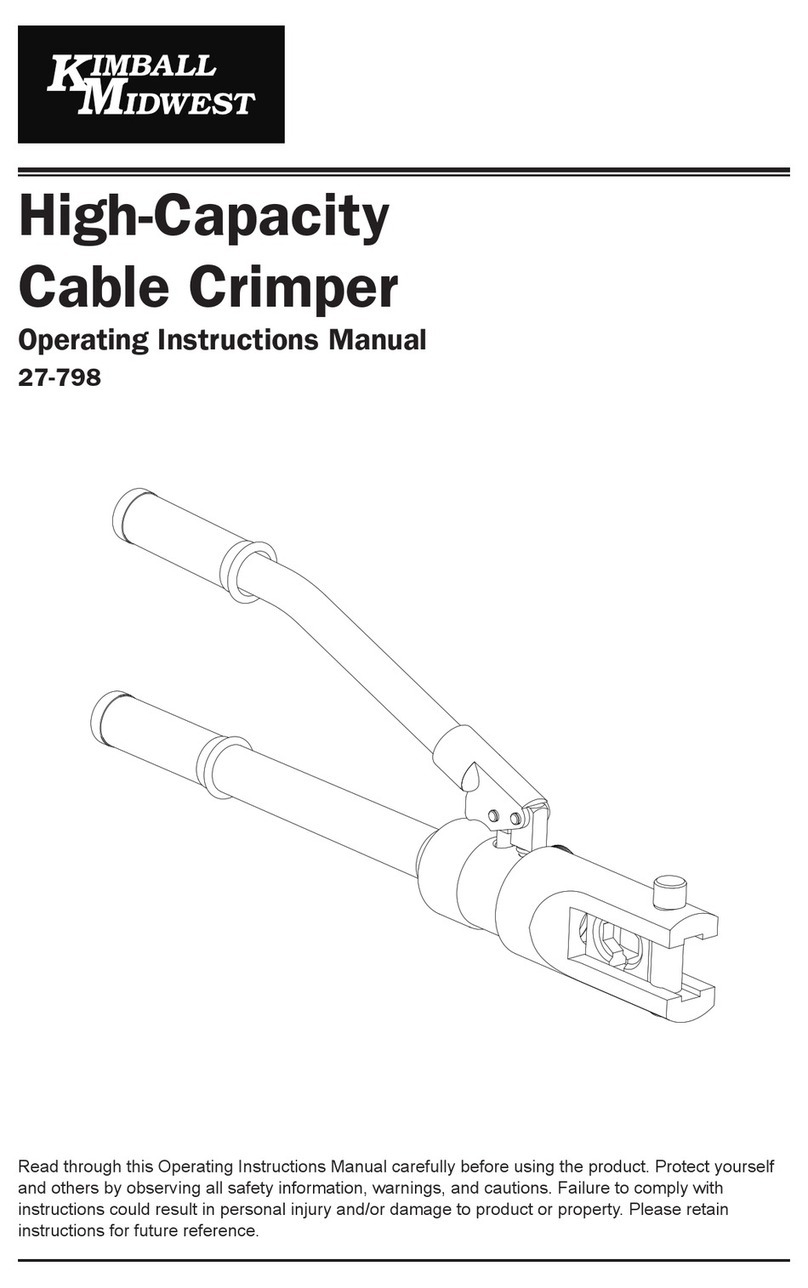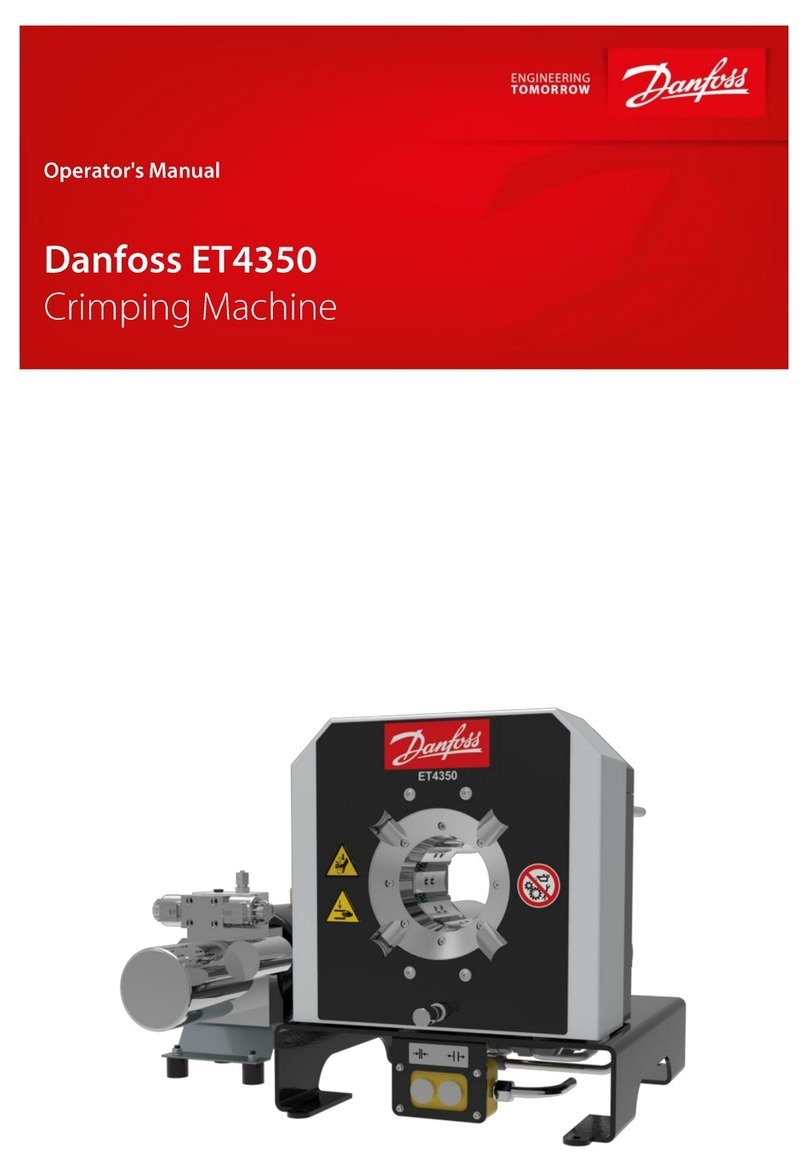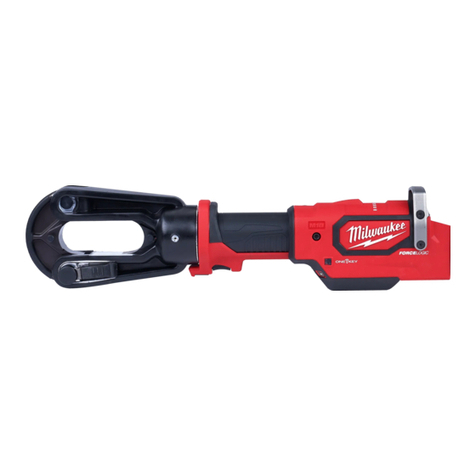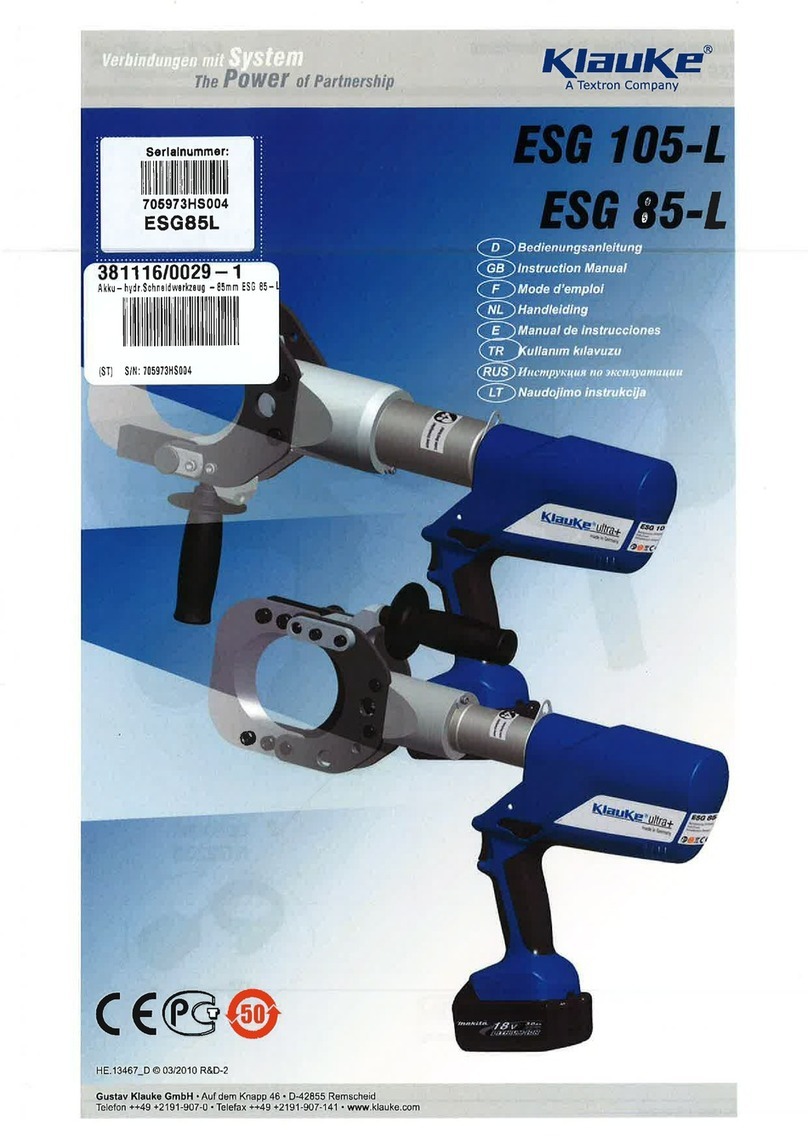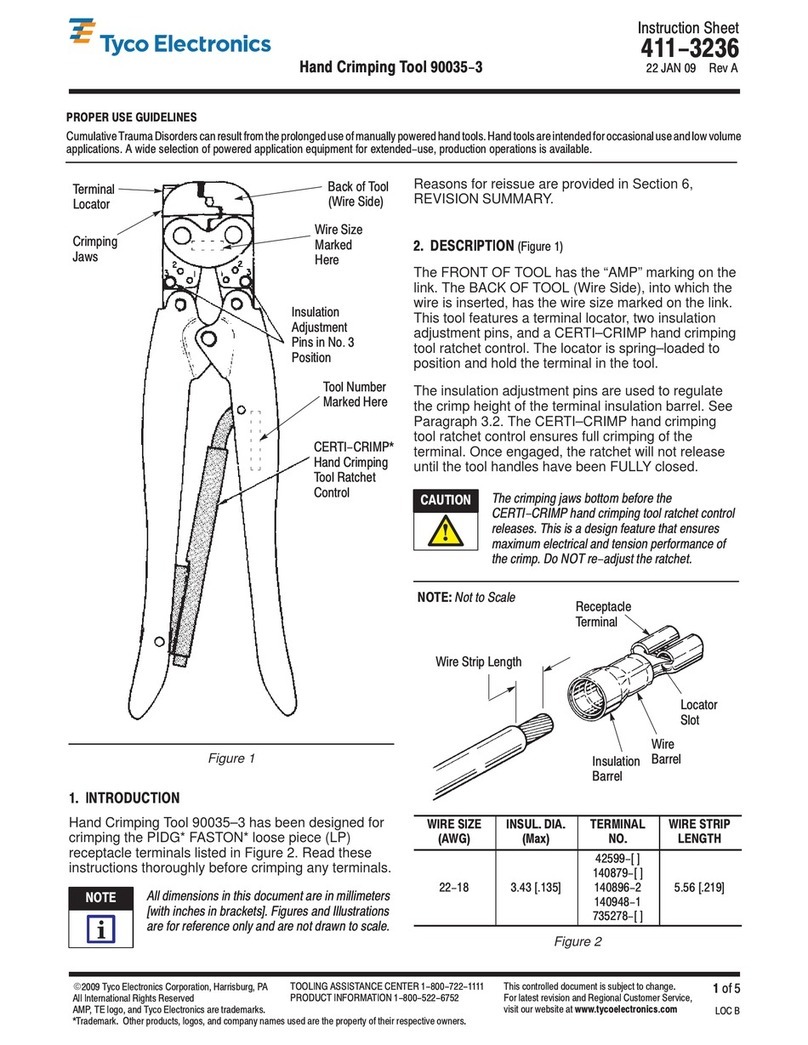
408-2281
5of 8
Rev CD
4.2. Splice
IMPORTANT: To ensure a quality crimp, gage the die
assembly at the beginning of a run, after changing a
die assembly — and then periodically during the run.
Refer to Paragraph 6.2 for gaging instructions.
The first (preferred) method is:
1. Before each crimp, apply a spray dry lubricant to
the crimping area of the dies to reduce sticking of
the splice in the dies.
2. Insert the properly stripped wire fully into the wire
barrel of the splice. When crimping a splice with a
color-coded band, insert the correct copper wires
into the color-coded banded end of the splice.
Ensure that there are no exposed strands.
DO NOT turn or twist the wire or splice during wire
insertion; otherwise, the internal screen of the
splice could turn and cut into the wires during
crimping.
3. Position the splice in the stationary die (nest) so
that edge of the die is within the width of the
circumferential crimp alignment mark of the splice.
The asterisk alignment mark on the splice must be
inside the die, facing up, and in alignment with the
alignment dot of the die. See Figure 5.
Make sure that the splice is properly aligned in the
stationary die (nest) so that the moving die (anvil)
will crimp the wire barrel of the splice.
4. Holding the wire in place, activate the power unit
to complete the first wire barrel crimp.
5. When the first wire barrel crimp is completed,
remove the crimping head pin, open the yoke, and
remove the splice.
6. To crimp the other wire barrel of the splice, rotate
the splice or crimping head 180 degrees, and
position the splice in the die so that the asterisk
alignment mark on the spliceis inside the die, facing
up, and in alignment with alignment dot of the die.
See Figure 5. Follow the same steps used to crimp
the first wire barrel (Steps 1 through 5).
The second (alternate) method is:
This method is only slightly different than the first
(preferred)method.Thedifferenceiswhen thewire
is inserted into the wire barrel.
1. Before each crimp, apply a spray dry lubricant to
the crimping area of the dies to reduce sticking of
the splice in the dies.
2. Position the splice in the stationary die (nest) so
that edge of the die is within the width of the
circumferential crimp alignment mark of the splice.
The asterisk alignment mark on the splice must be
inside the die, facing up, and in alignment with the
alignment dot of the die. See Figure 5.
Figure 5
3. Jog the power unit to advance the ram to hold the
splice in place. Make sure not to deform the wire
barrel; otherwise, it may be difficult to insert the wire
into the wire barrel of the splice.
4. Insert the properly stripped wire fully into wire
barrel of the splice. When crimping a splice with a
color-coded band, insert the correct copper wires
into the color-coded banded end of the splice.
Ensure that there are no exposed strands.
DO NOT turn or twist the wire or splice during wire
insertion; otherwise, the internal screen of the
splice could turn and cut into the wires during
crimping.
5. Holding the wire in place, activate the power unit
to complete the other wire barrel crimp.
6. When the wire barrel crimp is completed, remove
the crimping head pin, open yoke, and remove the
splice.
7. To crimp the other wire barrel of the splice, rotate
the splice or crimping head 180 degrees, and
position the splice in the die so that the asterisk
alignment mark on the splice is inside the die, facing
up, and in alignment with alignment dot of the die.
See Figure 5. Follow the same steps used to crimp
the first wire barrel (Steps 1 through 5).
*
Wire
Pin
Die Alignment
Dot
Asterisk
Alignment
Mark of
Splice
Edge of Anvil (Moving Die)
Within Width of Circumferential
Crimp Alignment Knurl of Splice
*
Anvil
(Moving Die)
Die Alignment
Dot
CircumferentialCrimp
Alignment Knurl
of Splice

